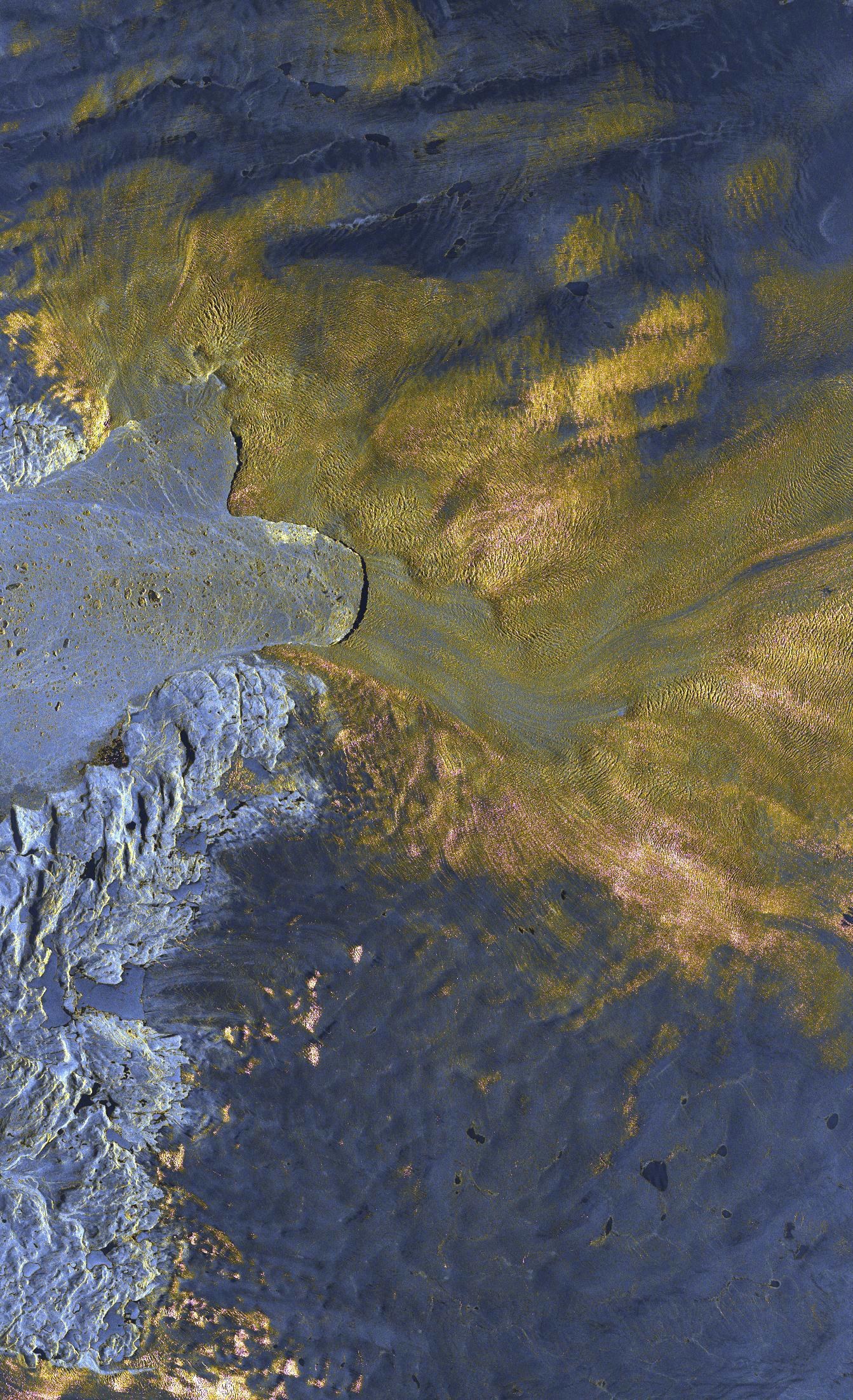Jakobshavn Isbræ at risk
Jakobshavn Isbræ at risk
Jakobshavn Isbræ, in Greenland, is one of the fastest-moving glaciers in the world; the mass of ice is advancing up to 35 metres per day towards the sea, and is threatened by climate change. The progress of glacial melting can be documented by comparing satellite images acquired in different years. The processed radar data shows the glacier structure in false colour. Smooth ice surfaces are coloured blue; magenta shows prominent structures like crevasses, while yellow indicates roughened surfaces and thus clearly marks the flow movement. It can be seen that the ice sheet advances to a narrow zone (left-hand side of image) and eventually breaks abruptly into the ‘smooth’ open sea.

